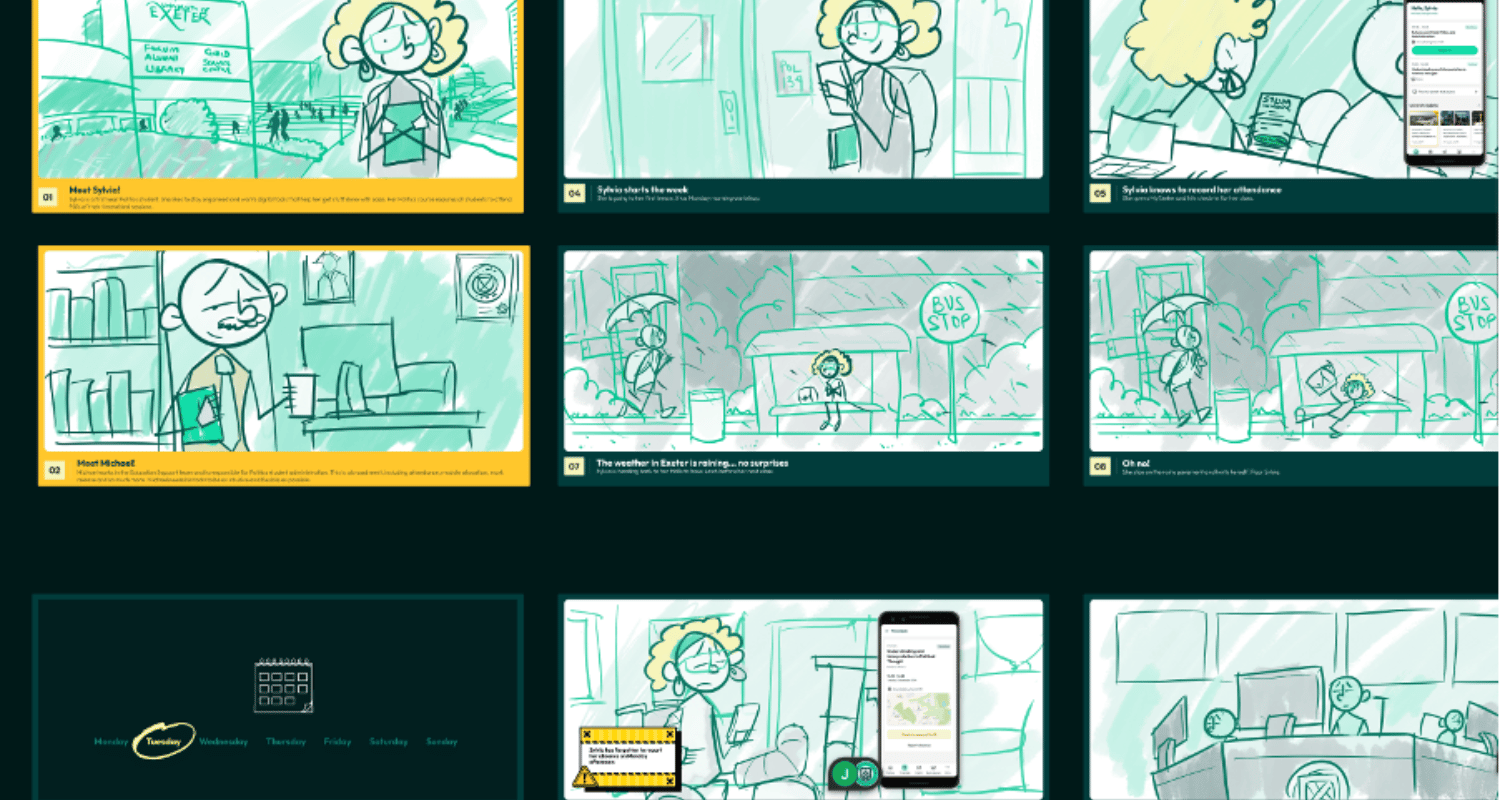Written by Babajide Aroyewun, Product Designer, University of Exeter
In the fast-paced world of digital product design, the ability to communicate complex ideas clearly and empathetically is often just as important as having the right tools or methods. One technique I personally lean into, especially during ideation, is storytelling through doodles and sketch storyboards. These aren’t just for illustration – they’re strategic assets that help teams stay human-centered in the design process.
At the University of Exeter, where our products serve a wide range of student and staff needs, storytelling has helped us bring user journeys to life before a single pixel of design is done.
Why Storytelling?
Storytelling helps us ground design decisions in empathy. Whether it’s the story of a new starter struggling to find her first seminar or a support advisor juggling multiple systems to manage student data, by crafting user stories ensures we don’t just build features – we solve real human problems.
Storyboards, in particular, offer a low-fidelity, high-impact way to:
- Visualise user goals and emotions,
- Map out moments of friction or delight,
- Align cross-functional teams on context, not just functionality.
A Real-World Example: Sylvia & the MyExeter Attendance Storyboard
One of our recent collaborative efforts involved designing improvements to attendance tracking in the MyExeter app. We created a future vision storyboard following Sylvia, a first-year Politics student, as she navigates her week on campus. Through Sylvia’s eyes, we explored check-ins, unexpected absences, and how she receives support from both the app and real people like Michael, her Education Support Advisor.
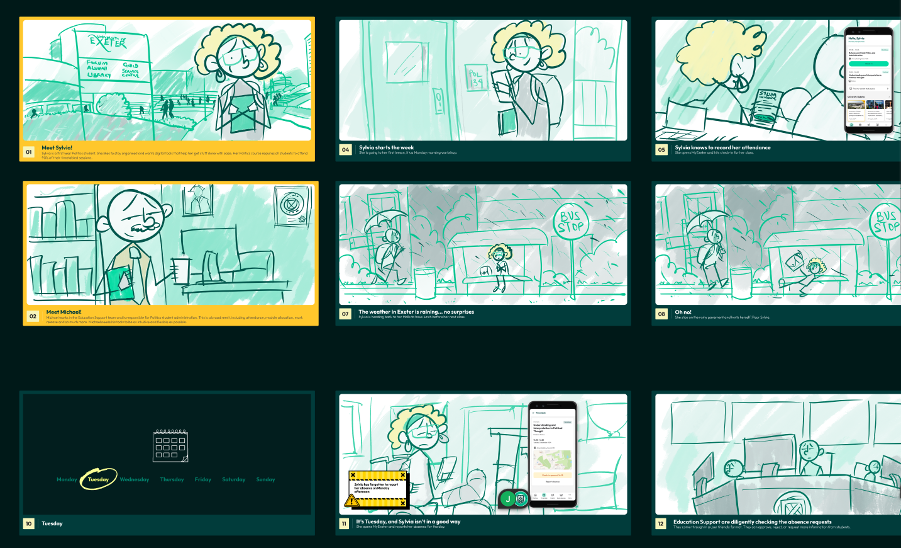
What started as rough sketches on a whiteboard evolved into a polished, narratively-driven storyboard that became central to stakeholder alignment. Everyone, from developers to policy leads, could see how the system would work for Sylvia. The result? We weren’t just improving UX flows – we were building empathy and shaping better experiences end-to-end.
Student Feedback Initiative: Sketching the Voice of the User
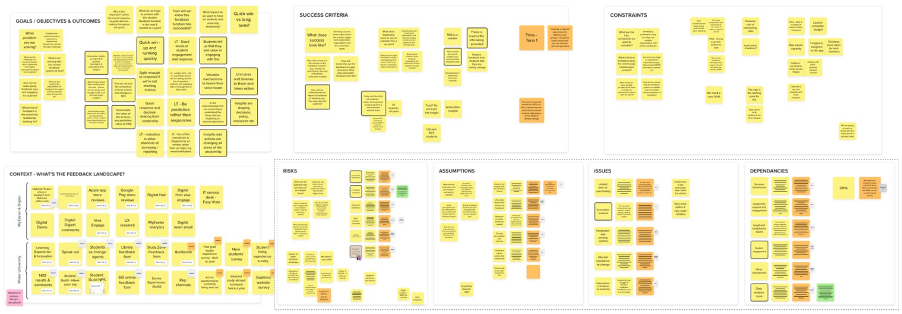
Another great example was during the Student Feedback Initiative, where we were tasked with redesigning how student feedback gets collected and shared. Rather than starting with wireframes, we kicked things off with a series of visual narratives – sketched journeys of students providing feedback and academic staff interpreting it.
These visual stories helped uncover pain points like low response motivation, lack of visible impact, and communication gaps. From there, we ideated collaboratively on interventions ranging from personalised nudges to feedback loops that feel actionable and acknowledged.

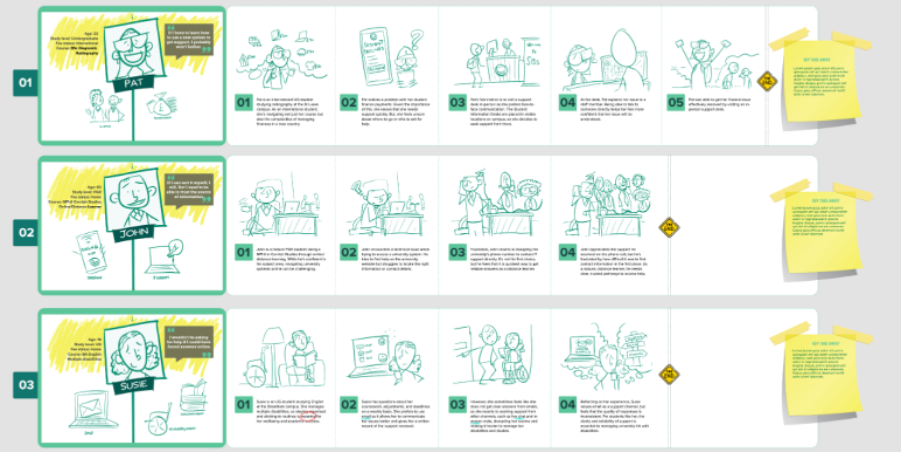
What makes sketching so powerful is its accessibility and adaptability. Unlike pixel-perfect prototypes, hand-drawn storyboards invite feedback, provoke discussion, and remove the intimidation of “finality.” They’re fast, iterative, and expressive – just like good design should be.
At the Design Chapter, the team has embraced these low-fidelity visuals as tools for:
- Ideation during early-stage discovery
- Empathy-building across departments
- Shared vision-setting with stakeholders
In short: sketches help us slow down and see the user.
Closing Thoughts
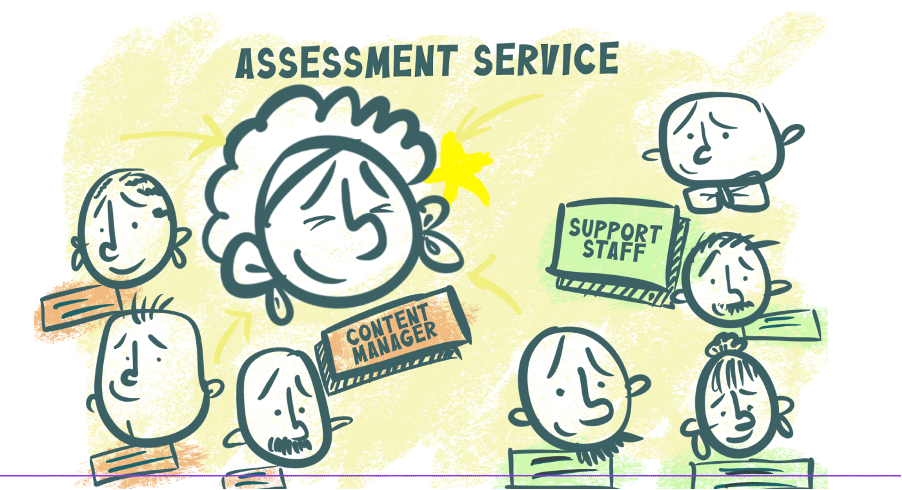
Digital design isn’t just about interfaces – it’s about understanding lives. And storytelling, especially when visual, lets us walk in someone else’s shoes long before we build the path. Whether you’re designing a new feature or rethinking a whole system, consider reaching for your pen before your mouse (or touchpad, as the case may be).
It’s amazing how much clarity a simple doodle can bring.
Take a look at our 2030 Digital Strategy.
Read our previous blog post to learn about how to make smarter decisions.

